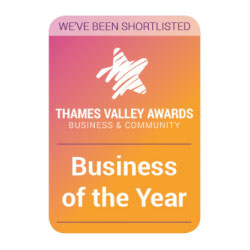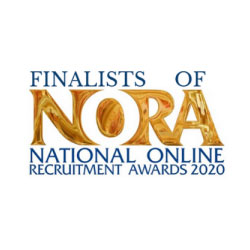[vc_row][vc_column width=”2/3″][vc_column_text]
Hey! It’s February already! Luckily we’re starting off the month with some really interesting news for you to read about. Some truly unbelievable! Grab a coffee, and enjoy.
[/vc_column_text][vc_empty_space height=”20px”][vc_separator][/vc_column][vc_column width=”1/3″][vc_single_image image=”166″][/vc_column][/vc_row][vc_row el_id=”firstpost”][vc_column][vc_empty_space height=”45px”][vc_custom_heading text=”The Rise of AI: Is This the End for Recruiters?” font_container=”tag:h3|text_align:left|color:%23055091″ use_theme_fonts=”yes”][vc_single_image image=”1344998″ img_size=”full” alignment=”center” css=”.vc_custom_1486471026379{margin-bottom: 30px !important;}”][vc_column_text]Artificial Intelligence is going to change the future of human recruitment forever. Recruitment appears to be a prime candidate for automation through machine learning and AI, but what does this mean for human recruiters? Is it possible that while we sift through LinkedIn, searching for contacts, that AI could do a better job of it? In some cases, yes. But it’s worth noting that you’re already interacting with AI – on your smartphone, Facebook and Netflix are prime examples of AI. There are no humans making those recommendations for you.
Many existing client roles will be entirely replaced while the others will have robots and humans paired together to enjoy this technological change. The recruitment consultants who identify technological changes early are more likely to survive and will have a head start on their competitors in the robot talent rush.
Early adopters who embraced the benefits of new technology and delegate the less glamorous research tasks to algorithms can be the least worried about this. According to the Boston Consulting Group, an estimated 25% of jobs will be replaced by robots by 2025, while an Oxford University study claims that 35% of UK jobs are at risk of automation within the next 20 years.
The answer to all this is that in the future, algorithms will connect recruiters with bespoke lists of candidates who will need expertise and guidance in specialise sectors. It’s modern recruitment with a human focus – quality over quantity and that’s the attitude we need to keep. AI is the way of working smarter, not harder.
Source[/vc_column_text][vc_empty_space height=”20px”][vc_separator][/vc_column][/vc_row][vc_row el_id=”secondpost”][vc_column][vc_empty_space height=”45px”][vc_custom_heading text=”How Second Interviews Help to Explore Better Potential Hires” font_container=”tag:h3|text_align:left|color:%23055091″ use_theme_fonts=”yes”][vc_single_image image=”1345001″ img_size=”full” alignment=”center” css=”.vc_custom_1486471391624{margin-bottom: 30px !important;}”][vc_column_text]Some of us know that a second interview can be far more challenging than the first. The first interview we use to vet a candidate’s abilities and responsibilities, but the competition heats up at stage 2. Recruiters want to use this time to reaffirm their opinions, get deeper into answers and simply fill any gaps about the potential hire.
What you really want to know with a second interview is what separates the best candidates from each other. What their technical abilities are, and the logistics involved should they have the job. The second interview is how you make direct comparisons. Jack Craven, who is the Executive Leadership Coach at All in Executive Coaching suggests the following tips:
Pre Interview: Get more people involved for a cross-section of feedback. Think about identifying who should be part of the second round. Support the interview team on which types of questions to ask and what characteristics to look for.
Interview Process: Listen to the candidate’s questions and responses to yours. Are they listening or anticipating questions? Does their answer sound canned? Are their answers insightful? Can you tell if there is a real, true understanding of the role? Ask them what excites them about the position and pay attention to your gut instinct.
Post Interview: Follow up with the references you felt were important to contact. Ask questions about the candidate’s leadership and traits most important to your opening. Do a background check and verify employment history – don’t assume everyone’s CV is accurate.
Source[/vc_column_text][vc_empty_space height=”20px”][vc_separator][/vc_column][/vc_row][vc_row el_id=”thirdpost”][vc_column][vc_empty_space height=”45px”][vc_custom_heading text=”Office Workers Will Spend 41.5 Hours a Year Complaining This Winter” font_container=”tag:h3|text_align:left|color:%23055091″ use_theme_fonts=”yes”][vc_single_image image=”1344997″ img_size=”full” alignment=”center” css=”.vc_custom_1486472789377{margin-bottom: 30px !important;}”][vc_column_text]No, the news title isn’t a joke. The heating experts help-link.co.uk revealed the truth behind working this winter and examined seven different working environments to find out who has it easy and who really has it rough this season.
According to office workers in Britain, working in temperatures under 18°C is unacceptable – but the huge 75% of workers in different environments work in conditions colder than this. Only 14% of employees in the UK get a day off when it’s too cold, but who has it the worst when it comes to working over winter?
Despite this snug 18 degrees, it’s office workers who somehow find 41.5 hours a year to moan about how cold they are at work. 28% of them say their workplace environment is too cold and 30% hate it. However on the other side of the coin, construction workers, railway workers and fishermen are just some of the professions that suffer this winter, working in conditions as low as 6°C in the UK.
The minimum temperature legally for indoor work is 16 degrees or 13 degrees for strenuous work, but there isn’t actually a minimum for the people who work outdoors. Sea workers absolutely have it the worst. They spend the most amount of time per year complaining about the temperatures (68 hours a year), 77% don’t get sick days and absolutely none of them get to leave work early on a snow day.
But somehow, office workers seem to be so affected by the cold that 67% of employees working in an office are late to work due to bad weather at winter. The rates of office workers being late in bad weather is higher than those that work in transport and double the amount of those that work out at sea – that’s strange, isn’t it? To be fair, their productivity is the least affected. 75% of outdoor workers say theirs is affected the most and are less productive during winter.
Source[/vc_column_text][vc_empty_space height=”20px”][/vc_column][/vc_row][vc_row][vc_column][vc_empty_space height=”45px”][vc_custom_heading text=”How Working Dads Juggle Their Roles” font_container=”tag:h3|text_align:left|color:%23055091″ use_theme_fonts=”yes”][vc_single_image image=”1345005″ img_size=”full” alignment=”center” css=”.vc_custom_1486473289590{margin-bottom: 30px !important;}”][vc_column_text]As you know we’re all about equality here at ABL which is why we wanted to take a moment to address the struggles of the modern male parent in the workplace. Working fathers are frequently reducing their hours or taking on a less stressful role in order to juggle work and family life.
The charity Working Families has come up with some new research and it suggests that 30% of fathers surveyed would take a pay cut in order to be more involved in their children’s lives because they “felt burnt out trying to juggle work and parental responsibilities.” The BBC dove further into this and decided to hear out the stories of these working fathers, and find out how they cope. Here is one compelling story from Tamas, Szesfehervar in Hungary that we just had to share with you:
“In my role, it’s really hard to find a healthy work-life-balance. In a lot of companies you will get benefits, such as salary increase based on the effort you invest into your job. If you are not focused on your career, then you will get no increase or not the amount that would be needed.
“If you are focused just on your career you will miss beautiful moments with your child. If you would like to spend more time taking care of your child, you have to work hard. Then it becomes a circle, like an infinite loop, that you cannot close.
“Some people advise to either not work that hard or to move to another company, but this is nonsense. Why? Because your family needs money. More money comes from higher appreciation at work. This comes from more hard work. However, it will also reduce the time you have for your family.
“In addition, the parental leave we have here in Hungary is near to nothing. We get two days of parental leave per year per child, which is not enough. Salary increases are also not a trend here, at least not in my case.”
With work pressures building up, how can we increase the rights for working fathers as well as women, moving on from here?
Source[/vc_column_text][vc_empty_space height=”20px”][/vc_column][/vc_row][vc_row][vc_column][vc_empty_space height=”45px”][vc_custom_heading text=”Quotas Only Help One Type of Woman to Progress” font_container=”tag:h3|text_align:left|color:%23055091″ use_theme_fonts=”yes”][vc_single_image image=”1344999″ img_size=”full” alignment=”center” css=”.vc_custom_1486473599845{margin-bottom: 30px !important;}”][vc_column_text]If you’ve been paying attention during the topical sections of our website, you’ll have read us talking about the quotas being introduced in the name of facing gender inequality in the workplace. More and more companies are now publishing their diversity figures and if the numbers continue the way they’re going – things are going to look a little embarrassing. In a bid to keep clients happy, recruiters are finally making the effort to find female candidates.
This might seem like a great step forward. Tech companies in the US have just 15% women at board level compared to the Fortune 500’s average of 22%. Those talented women who fought their way up in these firms (well, probably left and started their own and were then feted) it must be nice to finally receive the recognition they deserve. The thing is, if Tech thinks diversity issues will be solved by telling board-level recruiters to “make sure there’s a woman on the shortlist” then things become a little useless.
When Norway introduced quotas for the number of women on boards in 2006 everyone thought it would lead to less qualified board members, but on the contrary. What happened was that there was a small group of well-known, very senior women that picked up position after position and now they’re known as ‘the golden skirts’. Sure the Norwegian boards made their quotas, but they were all the same type of woman. The gender diversity has increased, but the range of personalities and skills only slightly increased.
Why is this a problem? The problem is that it’s the same type of women who are put on these shortlists time and time again. Julie Bornstein, COO at Stitch Fix told New York Magazine that the first place tech directors look when trying to fill a female role is within their own networks. Yes, they’re hiring women, but they’re still hiring someone as much like them as possible. The point we make is that we need to look at women from all backgrounds. We didn’t all get to where we are with the same traditional training as ‘the golden skirts’. Support all women, not some women.
Source[/vc_column_text][vc_empty_space height=”20px”][/vc_column][/vc_row][vc_row][vc_column][vc_empty_space height=”45px”][vc_custom_heading text=”The Girls’ Lounge: The Business Hub for Women” font_container=”tag:h3|text_align:left|color:%23055091″ use_theme_fonts=”yes”][vc_single_image image=”1345000″ img_size=”full” alignment=”center” css=”.vc_custom_1486473788188{margin-bottom: 30px !important;}”][vc_column_text]“Embrace your inner girl” is not a phrase you’d typically associate within a male dominated business industry, but The Girls’ Lounge is here to change that.
Taking a look at The Girls’ Lounge, you’ll notice all white sofas and cushions with some even adorned with pink glitter writing and it’s safe to say the decor is unashamedly feminine. Sometimes, they even offer manicures and face masks at their conferences. The patronising use of the word “girl” to describe a business hub might deter you, but there’s some pretty groundbreaking details within this space that we need to take a look at.
Started by Shelley Zalis – who is completely unapologetic by the way – 5 years ago, calling it “their boys’ club” for women to network. She says “There are masculine and feminine styles of leadership and we encourage women to find and lead with their strengths. We need both [styles] or we’re all the same,” She’s unapologetic because she believes that using the term ‘woman’ leads to the association with traditional hierarchy where female leaders have to conform to male leadership styles.
Look past the name and check out the details and you’ll find that within The Girl’s Lounge there are ten clocks from various countries. They’re based on a nine to five day and point to a time where a woman should leave work according to the wage gap in that country. For example the US clock points to 3.20pm highlighting the fact women in the US earn only 79% of what men earn. Another detail shows that male visitors to the lounge pay $1 for a bar of chocolate, while women pay 79 cents.
The aim of the space was for women to feel less isolated at male dominated business events and it now hosts serious talks on inequality, attracting heavyweight commercial partners like Google and Unilever. The Girls’ Lounge is part of The Female Quotient, a firm that aims to advance workplace equality. The firm has conducted some research and has found some unfortunate statistics:
- 77% of men believe a man is the best choice to lead an important project
- Unfortunately, over half of women (55%) agree with them!
- Men and women overwhelmingly believe that men don’t want women in top corporate positions
The study was based on 9,000 men and women across 8 markets. What do you think of these statistics, and more so do you think The Girls’ Lounge makes a good point, or is it creating further segregation?
Source[/vc_column_text][vc_empty_space height=”20px”][/vc_column][/vc_row][vc_row][vc_column][vc_column_text]Did you know?
[Tweet “Most languages in Western countries contain 7 vowels, but the Hungarian language contains 14!”][/vc_column_text][/vc_column][/vc_row][vc_row][vc_column][vc_separator][/vc_column][/vc_row][vc_row][vc_column][vc_empty_space height=”35px”][/vc_column][/vc_row][vc_row][vc_column][vc_column_text]
About the author…
Nicole Debson
Director & Founder
With 30 years in recruitment, a genuine interest in people and a desire to help forge careers, Nicole has built ABL on the principle of making businesses better and that little bit more international. Seeking to help candidates navigate their career path; to help clients find the ideal employee, her hands on approach is what has moulded our company. Fluent in French, with good Spanish, and a Masters in Industrial Relations & Personnel Management, you’ll find Nicole thumbing through her well-worn copy of Jack London’s White Fang, her all-time favourite book.[/vc_column_text][/vc_column][/vc_row]






